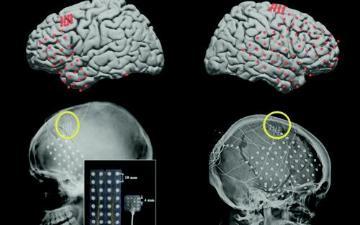
An Ethics Case Study
Photo by Sjoerd Los.
As technology impacts most aspects of our lives, it also affects the way we respond to death, and mourn. Not too many years ago, for example people grieving after a death didn’t have to worry about memorializing loved ones’ social media accounts, about including “digital assets” in a will, about being painfully reminded of their loss by a company’s well-intended but ill-considered “engagement” efforts, or about potentially losing treasure troves of memories if a photo hosting platform shut down.
The sadness is as old as the world, but people, through technology, respond to it in new ways. One such recent development is the creation of “griefbots.” An article titled “The Griefbot that Could Change How We Mourn” details in particular the work of a data scientist, Muhammad Ahmad, who hopes that artificial intelligence will “eventually allow us to craft the data left behind by an individual into convincing text-based simulations of that person. “ Such simulations would “respond when prompted, imitating the deceased’s cadence, tone, and idiosyncrasies.”
Ahmad has been working on his own “griefbot.” The project was a response to a personal loss—the death of his father. It is an effort to reclaim (or continue) interactivity with someone who has died. Beyond the interaction with those who knew the deceased, however, Ahmad also envisions a kind of interactivity that would span generations:
When his father died four years ago, Ahmad lamented the fact that any future children he would have would never be able to bond with their grandfather. He drew on his previous research, … and spent the last few years collecting data his father had left behind, such as audio or video recordings, text messages, and transcripts of letters. This information has allowed him to create a messenger program that (he claims) can imitate his father. …
Ahmad now has a 2-year-old daughter, and as he continues to evolve his simulation (he’s currently exploring how to enable it respond to images and adapt to new contexts), he hopes that one day she’ll form the semblance of a connection with her grandfather.
Questions
- Is the development of “grief bots” ethical? How might this action be perceived through the ethical prisms of utilitarianism, rights, justice, virtue, and the common good? For example, is there a violation of moral rights involved in the development of “griefbots”? Do we/should we respect people’s rights even after their death? For more about various ethical perspectives, please see this article about ethical decision-making and the considerations that we should keep in mind when faced with ethical questions.
- Is interacting with such chatbots different from watching a video or looking at photographs of a loved one who has died?
- In 1991, in what was dubbed a “virtual duet,” singer Natalie Cole “’resurrected’ her late father [Nat King Cole] to create a new version of his signature song ‘Unforgettable’ featuring them both”; are griefbots different from “virtual duets”? If so, in what way(s)?
- Should consent be required from the people who might be memorialized in this way?



